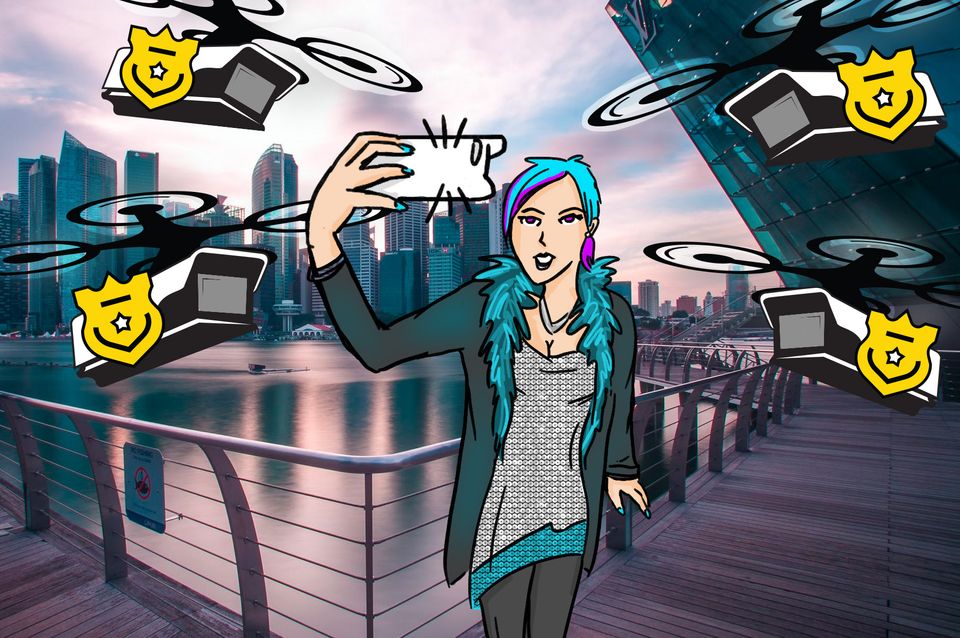Looking beyond the surveillance state

After developing technology to identify neo-Nazi symbolism in online forums, I’m coming to terms with the fact that it could be used for less altruistic purposes.
Ten months ago, I started working on a project that I would come to call Nemesis, a system designed to search arbitrary images for white-nationalist symbolism using an open-source machine-learning platform called TensorFlow. It wasn’t long after the system became operational that I realized just how close I was to being able to train it to identify specific people displaying symbolism.
Technologies like TensorFlow are more accessible and ubiquitous than ever before, even for people who may not have great familiarity with deep learning. And if the accessibility trend continues, companies and individuals will more readily use the technology to track others. It’s easy to imagine a near-term future where ill-intending individuals use inexpensive technology like this to track their neighbors’ comings and goings.
READ MORE ON GOVERNMENT SURVEILLANCE
As reform fails, back to business as usual for NSA surveillance
Jennifer Granick on spying: ‘The more we collect, the less we know’ (Q&A)
Garry Kasparov takes on the Russian surveillance state (Q&A)
‘State of Control’ explores harrowing consequences of surveillance
How to strike a balance between security and privacy (Q&A)
New research explores how the Great Firewall of China works
The relationship between Americans (well, everybody, really) and surveillance technology is complicated. On one hand, most people have an aversion to strangers taking photos of them in public without their permission. On the other, they have no problem with strangers viewing their selfies on Instagram. When it comes to our government taking photos of us, though, we understandably have a more unified (and negative) response.
Closed-circuit television, or CCTV, for example, is such a ubiquitous part of life that it’s normal for us to encounter six dozen security cameras over the course of a single day. Most of those cameras belong to workplaces and shops; others belong to law enforcement agencies.
CCTV platforms generally require a third party, like a security guard, to assess what the camera is recording and to ultimately take action. More advanced camera-based platforms can do things like track the speed of your car, or change the camera’s viewing angle. And today’s smartest cameras, in conjunction with large data banks and strong computer algorithms, can identify and track individual humans or vehicles, even discerning unique details of a human face.
In the past five years, we’ve quietly entered an age where authorities in the United Kingdom are using facial-recognition technology to arrest and prosecute individuals identified by police-run cameras on the street. While law enforcement advocates applaud using facial-recognition technology to identify and arrest suspects, the implications of fielding this technology on a large scale are concerning. Despite having an alarmingly bad rate of accurate identification, law enforcement use of automated facial-recognition technologies is indicative of a surveillance state in which common citizens are left unsure of whether or not they will be wrongly targeted by law enforcement.
We are deploying Automated Facial Recognition in Cardiff City Centre today. A couple of hours in, a couple of arrests. #swpafr #swpolice pic.twitter.com/hDUCzdMfbS
— Scott Lloyd (@Inspectorslloyd) March 17, 2018
Mikko Hyppönen, Chief Research Officer at cybersecurity company F-Secure, says the goal of government surveillance, very broadly, is to collect information on people without alerting them.
“Governmental surveillance is not about the government collecting the information you’re sharing publicly and willingly; it’s about collecting the information you don’t think you’re sharing at all, such as the online searches you do on search engines…or private emails or text messages…or the location of your mobile phone at any time,” he says.
Individual citizens are right to be concerned about the surveillance motivations and capabilities of law enforcement agencies. And with increased accessibility to advanced tracking tools, we are approaching an age in which we should be equally, if not more, alarmed by those of private companies and individuals.
Many technologies that once were available only to government entities are now readily available to the public. Companies like Uncanny Vision are selling cameras that can differentiate between humans and vehicles, and even track faces.
Technological proliferation has given us many great things. It has also given us many challenges, one of which is a democratization of technology that can be used to learn intimate details about individuals—and track them—without their consent.
If we don’t pay attention to the advancements and spread of this technology in particular, we could find ourselves surrounded with cameras and other devices that are watching, recording, and analyzing our every move.
